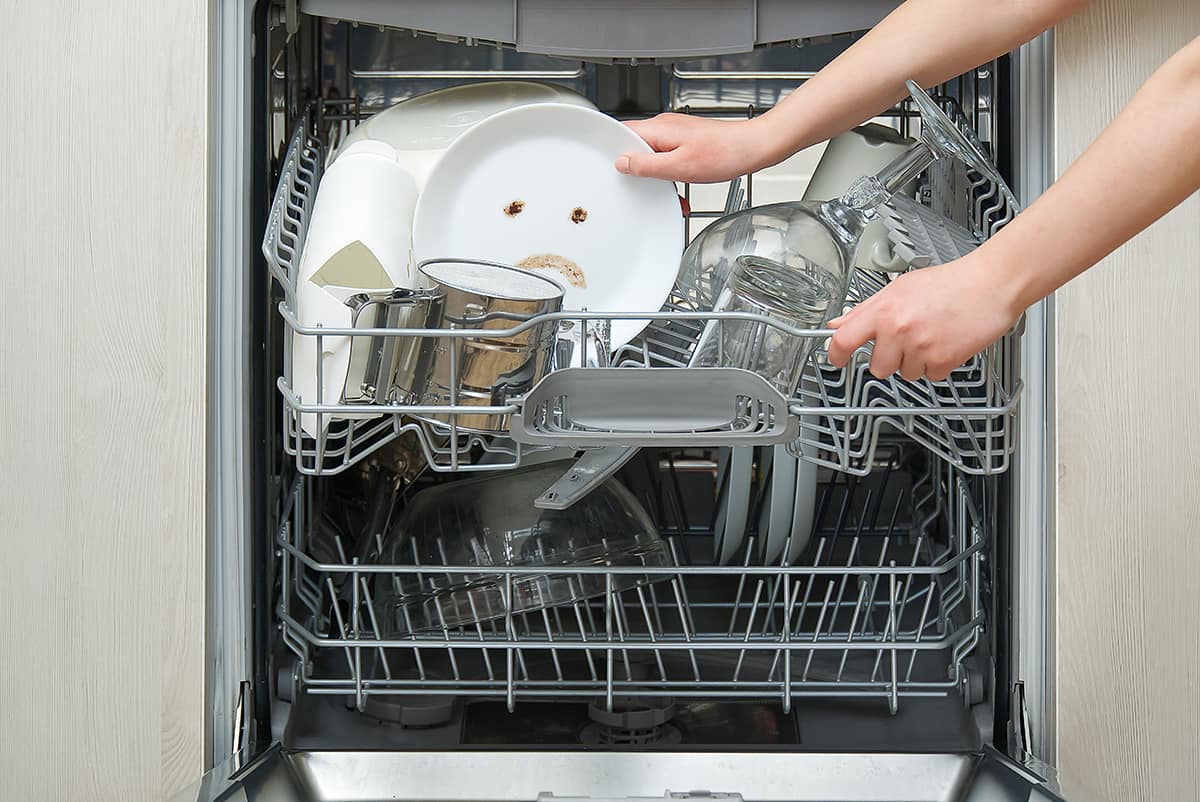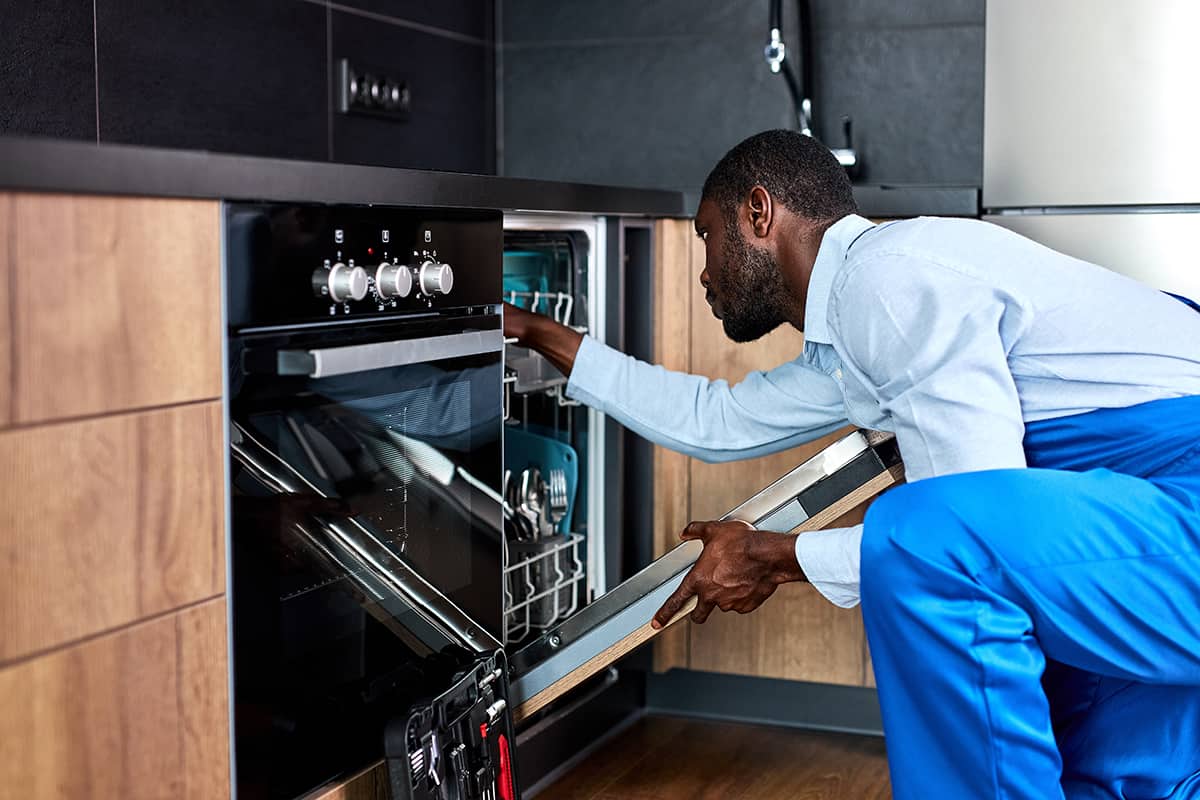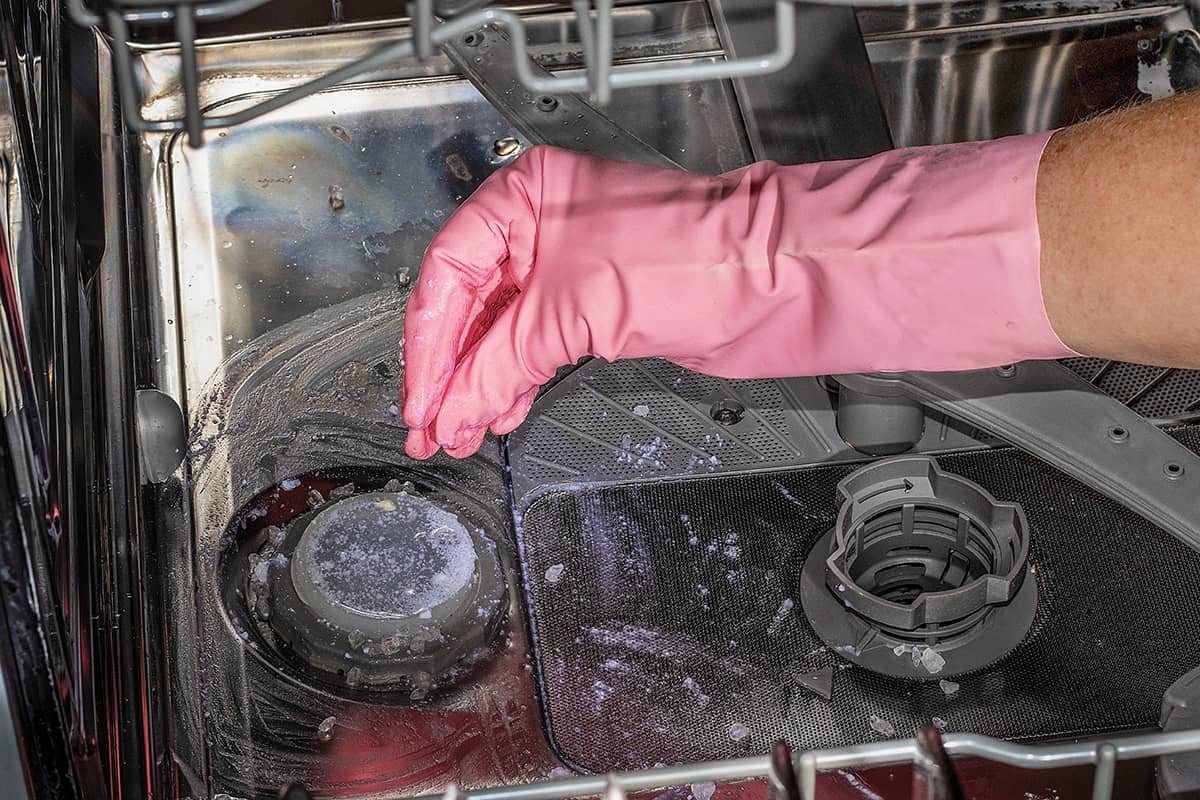Are you sick of putting dirty dishes into your dishwasher only to have it fail to clean them? Clogging the dishwasher is a common cause of the malfunction. So, what symptoms can you look for to determine if your dishwasher is clogged?
Look for the following signs to determine whether your dishwasher is clogged:
- Gurgling sounds
- Slow draining times
- Standing water
- Foul smells inside the dishwasher
- Backed up water in your kitchen sink
- Unclean dishes
In this guide, we will discuss some of the warning signs that your dishwasher may be clogged, as well as some solutions. This guide will help anyone, from long-term homeowners to first-time apartment dwellers, unclog their dishwashers quickly.
How to Know If Your Dishwasher Is Clogged
It’s infuriating to put dirty dishes into the dishwasher only to find that they aren’t clean when the cycle finishes. A clogged dishwasher could be the culprit here.
There are a few signs to look out for that may indicate that your dishwasher is clogged.
1. Gurgling sounds
There are a number of possible causes for the gurgling noises coming from a dishwasher that is backed up. Possible causes of this gurgling noise include a clog in the dishwasher’s drain hose or pump, which prevents water from draining and causes the pump to work harder to force water through.
2. Slow draining times
Slow draining times can be the result of a clogged dishwasher’s drain hose or pump, which prevents water from draining out of the appliance. Because of the blockage, the dishwasher may take an unusually long time to drain, or it may not drain at all if the blockage is severe enough.
3. Standing water

Standing water can also be caused by a blocked dishwasher that is unable to pump water out. When a dishwasher’s motor has trouble pushing water past a blockage, water can pool. An obstruction in the dishwasher’s filtering system can also cause debris to accumulate in the appliance and water to pool.
4. Foul smells inside the dishwasher
If the dishwasher is having trouble pumping water because of a clog, it may start to smell bad. The dishwasher’s motor may struggle to force water past the obstruction, leading to stagnant water where mold and bacteria can grow and give off an unpleasant odor.
5. Backed up water in your kitchen sink
If the dishwasher is hooked up to the same drain as the sink or garbage disposal and that drain becomes clogged, water will back up into the sink. This means that you will need to remove the clog in your kitchen sink, which may involve cleaning out the garbage disposal.
6. Unclean dishes

Clogged dishwashers spray dirty water and the water used to fill the tub all over your dirty dishes. Whatever purpose the water serves in the dishwasher (washing dishes with detergent or rinsing them clean), you won’t have a good time if it ends up contaminated with leftover food scraps.
How to Unclog a Dishwasher

Now that we have a basic understanding of what signs indicate a clogged dishwasher, let’s focus on how we can unclog it.
There are several ways of doing this, which I’ll cover down below.
1. Clean out the filter assembly
The dishwasher’s water is filtered through a series of filters in the filter assembly, which are designed to catch food scraps and other debris before they enter the dishwasher. The filter assembly, which can include a coarse filter, fine filter, and microfilter, is typically found in the dishwasher’s base. The filter assembly aids in the dishwasher’s smooth operation by blocking debris from entering the drain port and drain hose.
Here are the steps to follow to clean the dishwasher filter:
- Locate the filter assembly—It will look like a cylinder or a cone-shaped object with 2 or 3 parts.
- Remove the filter assembly— One or more tools, such as a screwdriver or pliers, may be required to remove the filter assembly from your dishwasher. Pressing a latch or tab can unlock it on some models.
- Clean the filters— The filters can be cleaned by hand with a soft brush or sponge and some warm water. Use a toothbrush to get into those hard-to-reach places.
- Rinse the filters— After you’ve scrubbed the filters, give them a good rinsing in some warm water and let them air-dry.
- Reassemble the filters— After washing and drying the filters, reinstall the filter assembly back into the dishwasher.
2. Clean the drain port
Dishwashers have what’s called a “drain port,” which is essentially a hole or opening through which used water can be drained. The drain hose from your dishwasher attaches to the drain port at the bottom of the unit. In a dishwasher, the water is drained via a hose connected to a drain port.
Here’s how you clean it:
- Locate the drain port—The drain port is located in the bottom of the dishwasher and is connected to the drain hose.
- Remove any debris— Take a look into the drain port with a flashlight and get rid of anything that’s blocking it, like dirt or a stray piece of metal. Tweezers or pliers may come in handy for this.
- Clean the drain port— After you’ve cleared the drain port of obstructions, give the inside a gentle scrub with a soft brush or sponge to get rid of any lingering food particles or dirt.
- Rinse the drain port— Scrubbing the drain port and then rinsing it with warm water should get rid of any lingering grime or debris.
- Reassemble the drain hose— Make sure the drain hose is securely attached back to the drain port before starting the dishwasher.
3. Clean the drain hose
Dishwasher water is carried to the drain via a flexible hose called a drain hose. The water is drained through the drain hose and out the drain port when the machine is in use. A sink drain or garbage disposal is typically connected to the other end of the drain hose.
Follow these steps to clean the drain hose:
- Remove the drain hose— To disconnect the drain hose from your dishwasher, you may need to use a screwdriver or pliers, depending on the model. The hose can be removed from some models by pressing a latch or tab.
- Clean the drain hose— Scrub the inside of the drain hose gently with a soft brush or sponge and some warm water to get rid of any food particles or debris.
- Rinse the drain hose—Use warm water to flush any lingering debris out of the hose before letting it dry.
- Reassemble the drain hose—Attach it back to your dishwasher and garbage disposal or sink drain line. Make sure there aren’t any kinks in the hose.
4. Clean the garbage disposal
A garbage disposal is a machine typically found in kitchens, used to reduce food scraps to a size manageable for flushing away. Any debris in the garbage disposal will cause the water to be back in the dishwasher, so you need to clean it periodically.
Here’s how you clean your garbage disposal:
- Turn off the power— Remember to unplug or turn off the circuit breaker for the garbage disposal before cleaning it.
- Remove any debris— With the aid of a flashlight, you can check the disposal’s interior for any obstructions and clear them out. Tweezers or pliers may come in handy for this.
- Clean the blades— Brush the disposal blades gently to remove debris and grime. Use a toothbrush to get into those hard-to-reach places.
- Rinse the disposal— After giving the disposal a good scrubbing, give it a good rinsing with some hot water to get rid of any leftover grime.
- Turn on the power— You should turn the power back on after cleaning the disposal and let it run for a few seconds to remove any leftover particles.






